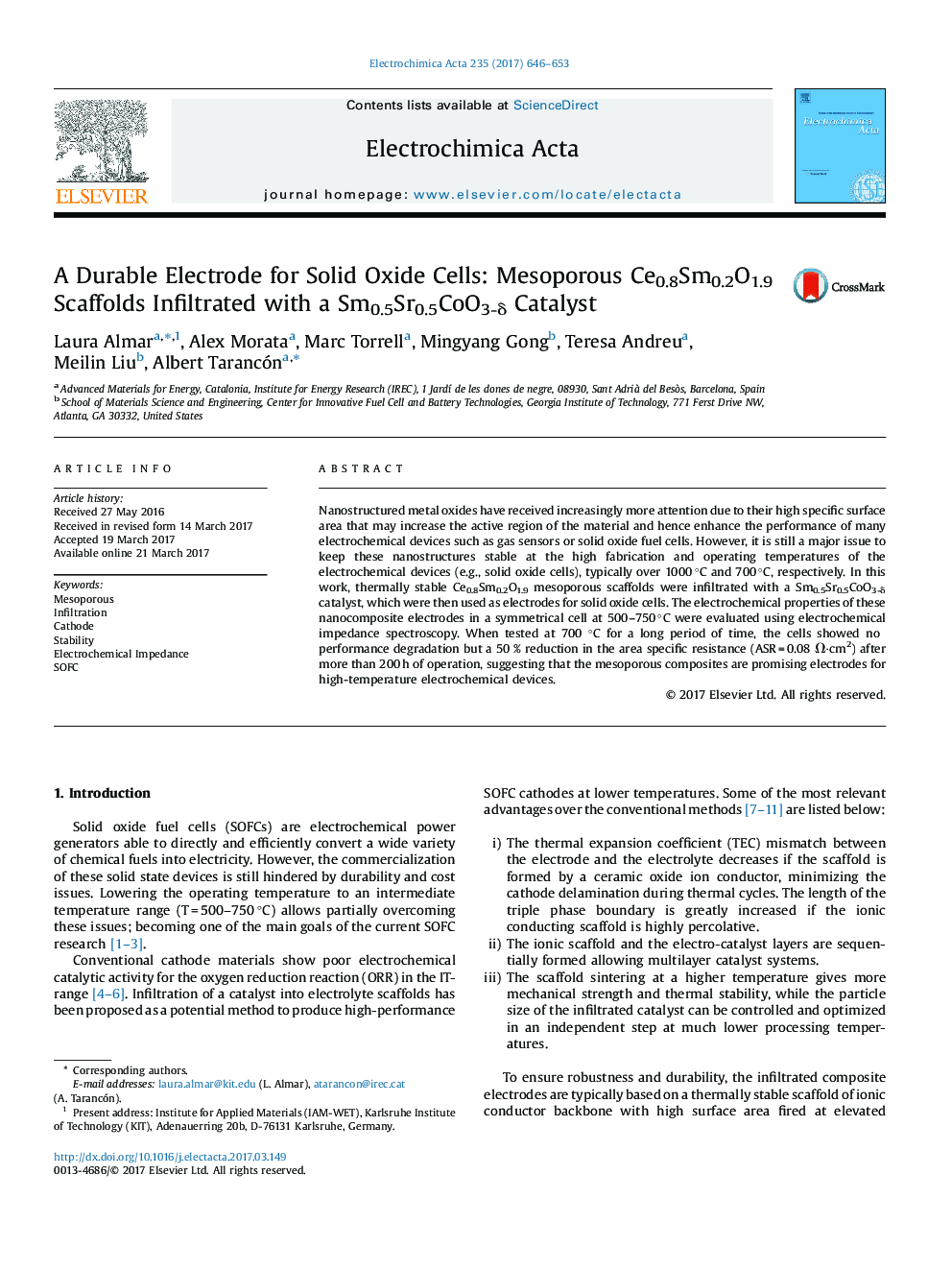| کد مقاله | کد نشریه | سال انتشار | مقاله انگلیسی | نسخه تمام متن |
|---|---|---|---|---|
| 6471724 | 1424122 | 2017 | 8 صفحه PDF | دانلود رایگان |

- Thermally stable mesoporous Ce0.8Sm0.2O1.9 was infiltrated with Sm0.5Sr0.5CoO3-δ.
- An area specific resistance of 0.08 Ωcm2 was obtained as SOC electrode at 700 °C.
- A continuous enhancement of the performance was observed for more than 200 h at 700 °C.
- The electrochemically active surface area increases with time until stabilization.
- Catalyst-infiltrated thermally stable 3D-nanostructures were proved for SOCs.
Nanostructured metal oxides have received increasingly more attention due to their high specific surface area that may increase the active region of the material and hence enhance the performance of many electrochemical devices such as gas sensors or solid oxide fuel cells. However, it is still a major issue to keep these nanostructures stable at the high fabrication and operating temperatures of the electrochemical devices (e.g., solid oxide cells), typically over 1000 °C and 700 °C, respectively. In this work, thermally stable Ce0.8Sm0.2O1.9 mesoporous scaffolds were infiltrated with a Sm0.5Sr0.5CoO3-δ catalyst, which were then used as electrodes for solid oxide cells. The electrochemical properties of these nanocomposite electrodes in a symmetrical cell at 500-750 °C were evaluated using electrochemical impedance spectroscopy. When tested at 700 °C for a long period of time, the cells showed no performance degradation but a 50 % reduction in the area specific resistance (ASR = 0.08 Ω·cm2) after more than 200 h of operation, suggesting that the mesoporous composites are promising electrodes for high-temperature electrochemical devices.
Journal: Electrochimica Acta - Volume 235, 1 May 2017, Pages 646-653